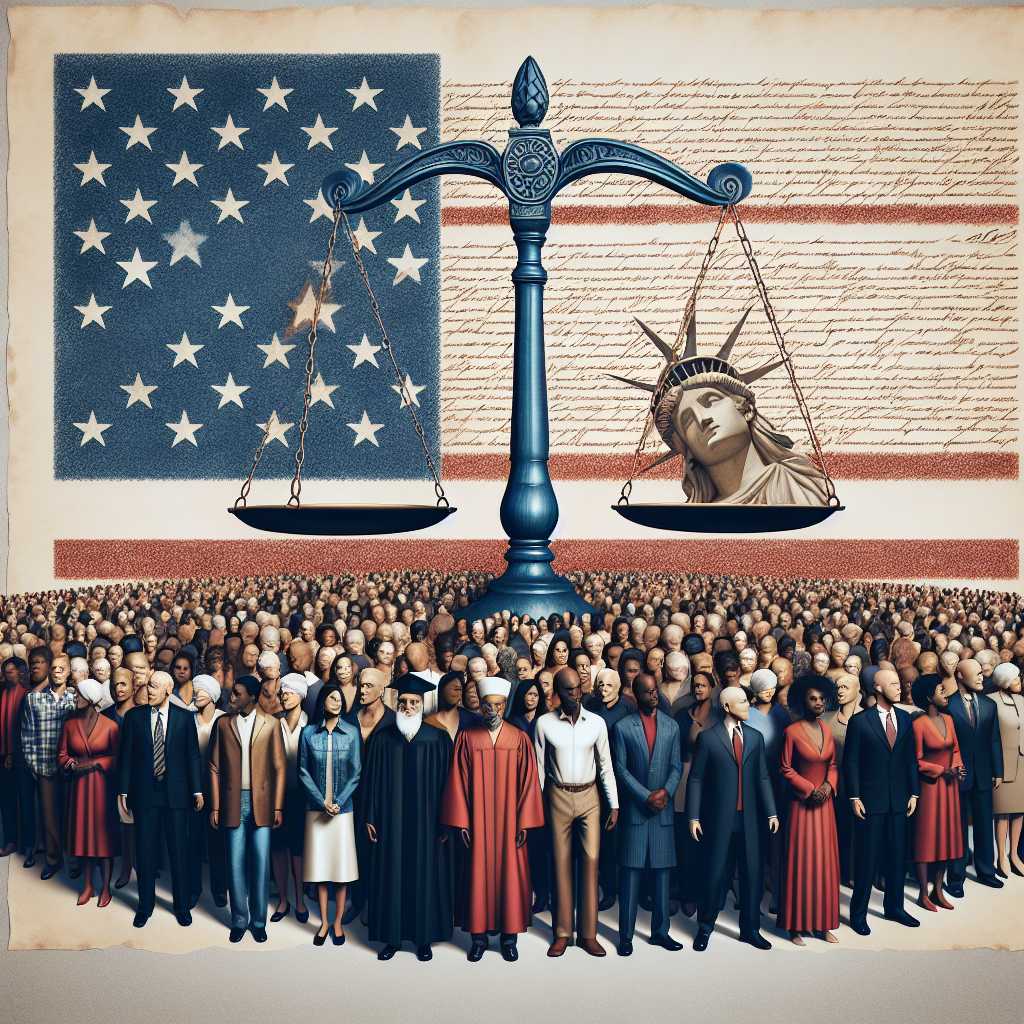Example Article
Historical Context and Origins of the 14th Amendment
The 14th Amendment, ratified in 1868, emerged from the turbulent aftermath of the American Civil War. Its primary aim was to secure rights for newly freed slaves and to redefine citizenship in a fractured nation. Before its adoption, the United States lacked a clear constitutional guarantee that all persons born or naturalised in the country were citizens entitled to equal protection under the law. The amendment sought to address this gap by overturning the Dred Scott v. Sandford decision that had declared African Americans could not be citizens.
Its introduction was part of the broader Reconstruction effort, which aimed to rebuild and reunify the United States while transforming Southern society. The amendment’s Citizenship Clause unequivocally granted citizenship to all persons born or naturalised in the United States, effectively nullifying laws that marginalised former slaves. Beyond citizenship, it established due process and equal protection clauses that have since become foundational principles for civil rights litigation.
This historical context is crucial to understanding why the 14th Amendment remains one of the most litigated and significant parts of the Constitution. It was not merely a legal formality but a radical reshaping of American democracy, setting a precedent for inclusivity and justice amid deep societal divisions.
Equal Protection Clause: Catalyst for Social Change
At the heart of the 14th Amendment lies the Equal Protection Clause, a provision that prohibits states from denying any person within their jurisdiction equal protection under the law. This clause has served as a powerful tool against discrimination and unequal treatment across countless domains.
In landmark cases such as Brown v. Board of Education (1954), the Supreme Court utilised this clause to dismantle racial segregation in public schools, marking a pivotal victory for the civil rights movement. The clause has since been invoked to challenge discrimination based on gender, sexual orientation, disability, and more, demonstrating its broad applicability.
Moreover, the Equal Protection Clause acts as a living instrument that evolves with society’s understanding of equality. It empowers courts to scrutinise laws and policies that may perpetuate systemic injustice or inequality, thereby fostering progressive social change. Its adaptability ensures that the promise of equal protection remains relevant in addressing contemporary issues such as voting rights and immigration status.
Due Process Clause: Safeguarding Individual Liberties
The Due Process Clause of the 14th Amendment guarantees that no state shall deprive any person of life, liberty, or property without due process of law. This provision extends fundamental protections against arbitrary government actions to all individuals within state jurisdictions.
Due process encompasses both procedural safeguards—such as fair trials and notice—and substantive protections against laws that unfairly restrict fundamental rights. Over time, courts have interpreted this clause to incorporate essential Bill of Rights protections against state infringement through a process called incorporation.
This has profound implications for safeguarding individual liberties like freedom of speech, religion, and privacy. It also forms the basis for landmark rulings on reproductive rights and marriage equality. Consequently, due process under the 14th Amendment acts as a critical bulwark protecting citizens from governmental abuse and ensuring justice is administered fairly.
Modern Challenges and Interpretations
Despite its enduring significance, the 14th Amendment faces contemporary challenges regarding its interpretation and scope. Debates persist over how expansively courts should apply its provisions in today’s rapidly changing social and political landscape.
Issues like immigration status have tested citizenship definitions under the amendment’s Citizenship Clause. Additionally, questions about affirmative action policies raise complex discussions about what constitutes equal protection versus permissible remedial measures. Some critics argue that an overly expansive reading risks judicial overreach, while proponents assert it is essential for protecting marginalized communities.
The amendment’s adaptability is both its strength and source of contention—its language is broad enough to encompass new rights but vague enough to invite divergent judicial philosophies. As society evolves, so too will interpretations of this constitutional cornerstone, ensuring it remains central to debates on justice and equality.
Conclusion: The Enduring Legacy of the 14th Amendment
The 14th Amendment stands as a monumental achievement in American constitutional history—reshaping notions of citizenship, equality, and individual rights. Its clauses have served as vital instruments in combating discrimination and expanding civil liberties.
From its origins during Reconstruction to its role in landmark Supreme Court decisions throughout history, it has continually reaffirmed America’s commitment to justice and inclusivity. While modern challenges test its boundaries, its core principles remain foundational to upholding democracy.
In essence, the 14th Amendment is not simply a relic of post-Civil War reform; it is an evolving framework that continues to shape American society by striving towards greater equality under law.
Notes
- The 14th Amendment has been cited in over 26,000 Supreme Court cases since its ratification.
- Brown v. Board of Education (1954) was one of the first major cases relying on the Equal Protection Clause.
- The Due Process Clause has been used to incorporate most Bill of Rights protections against state governments.

